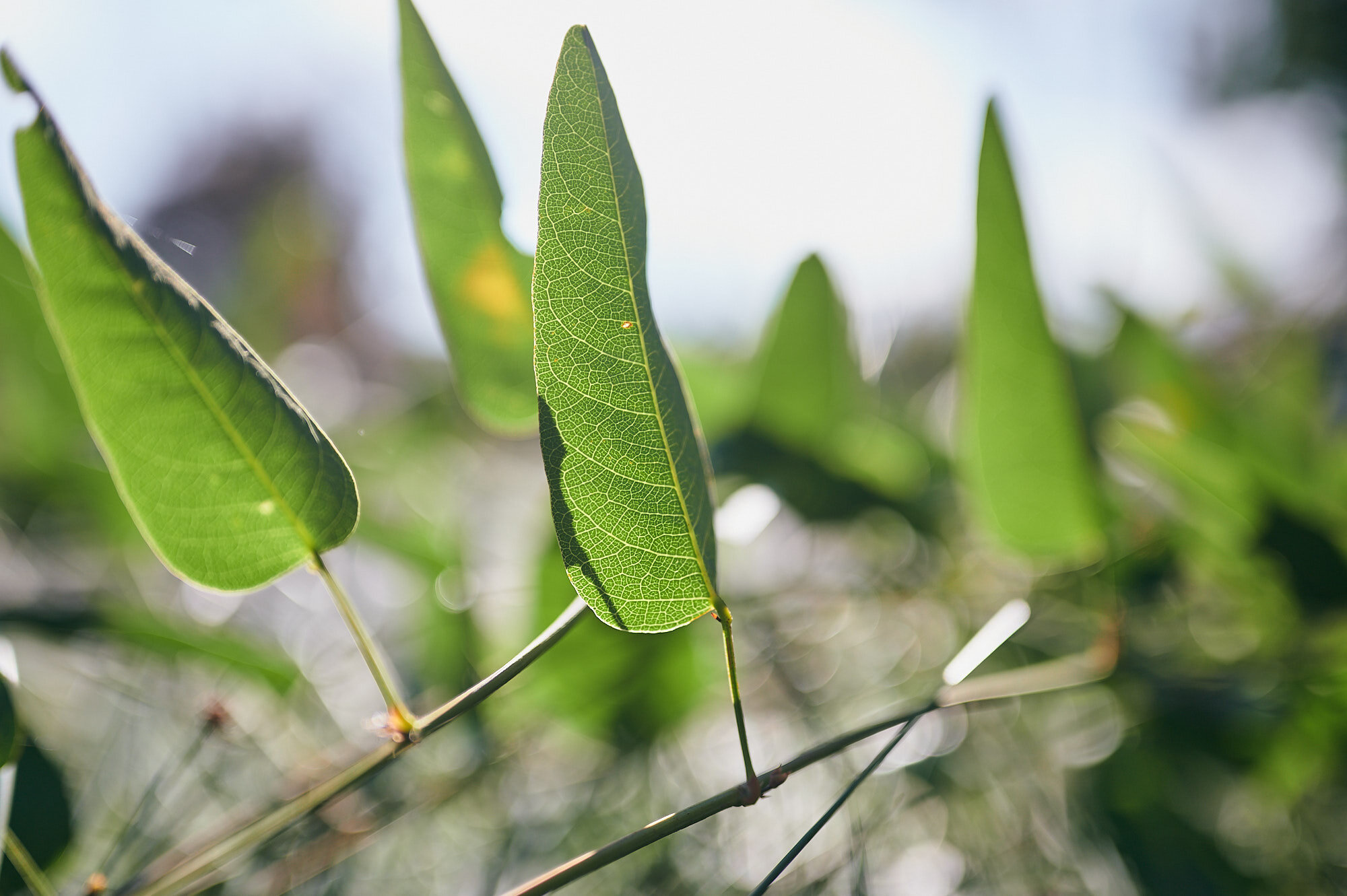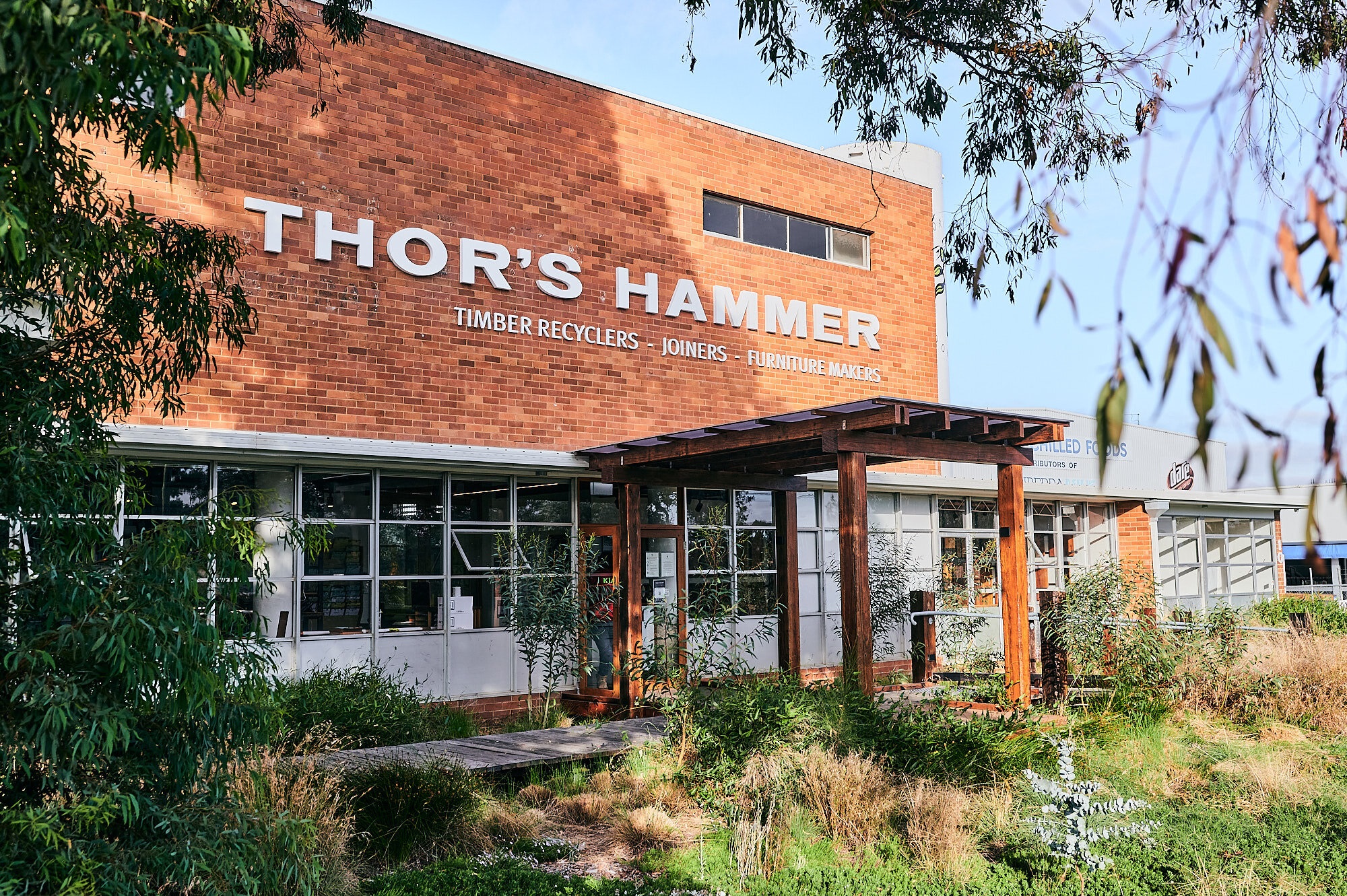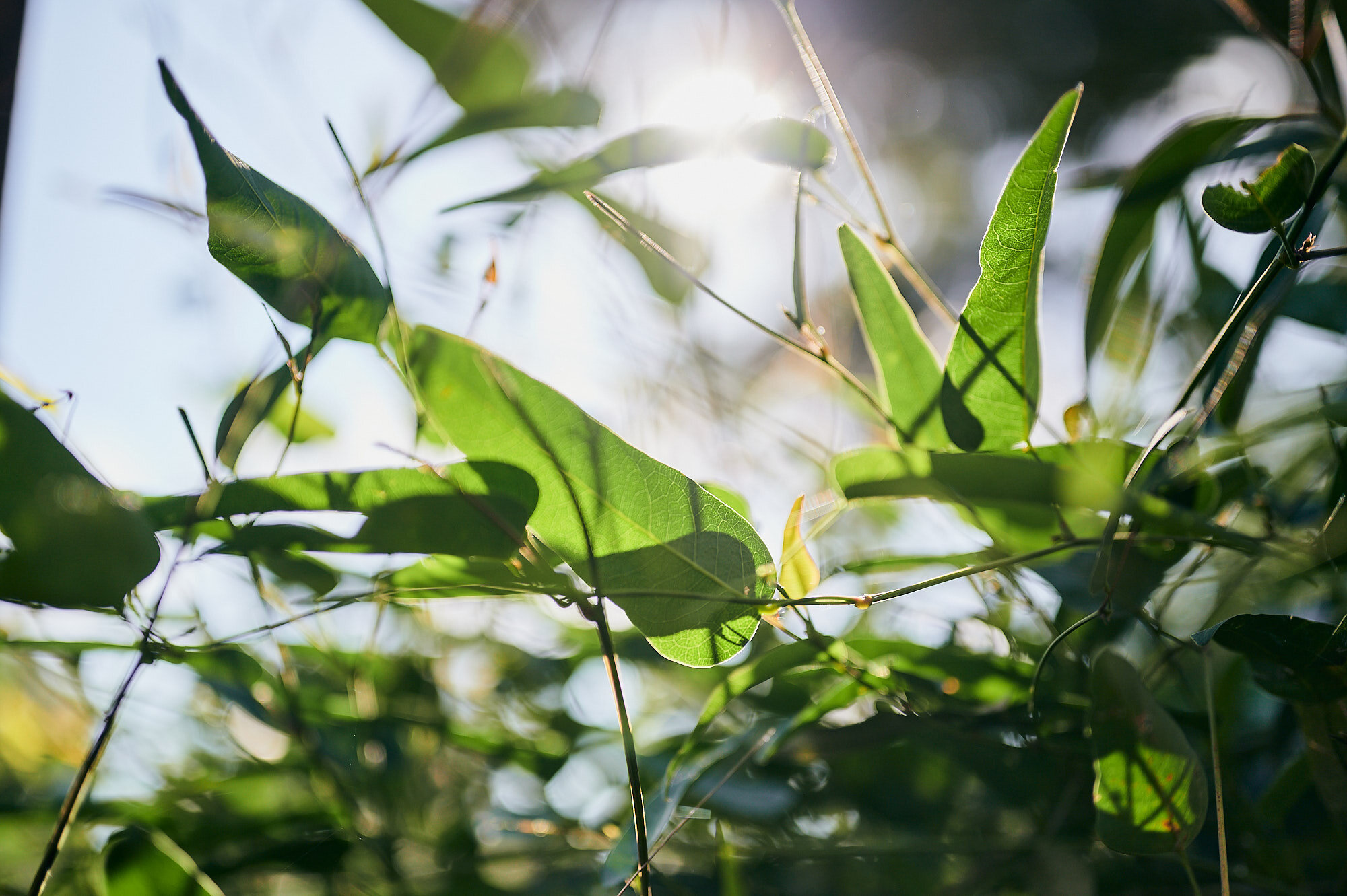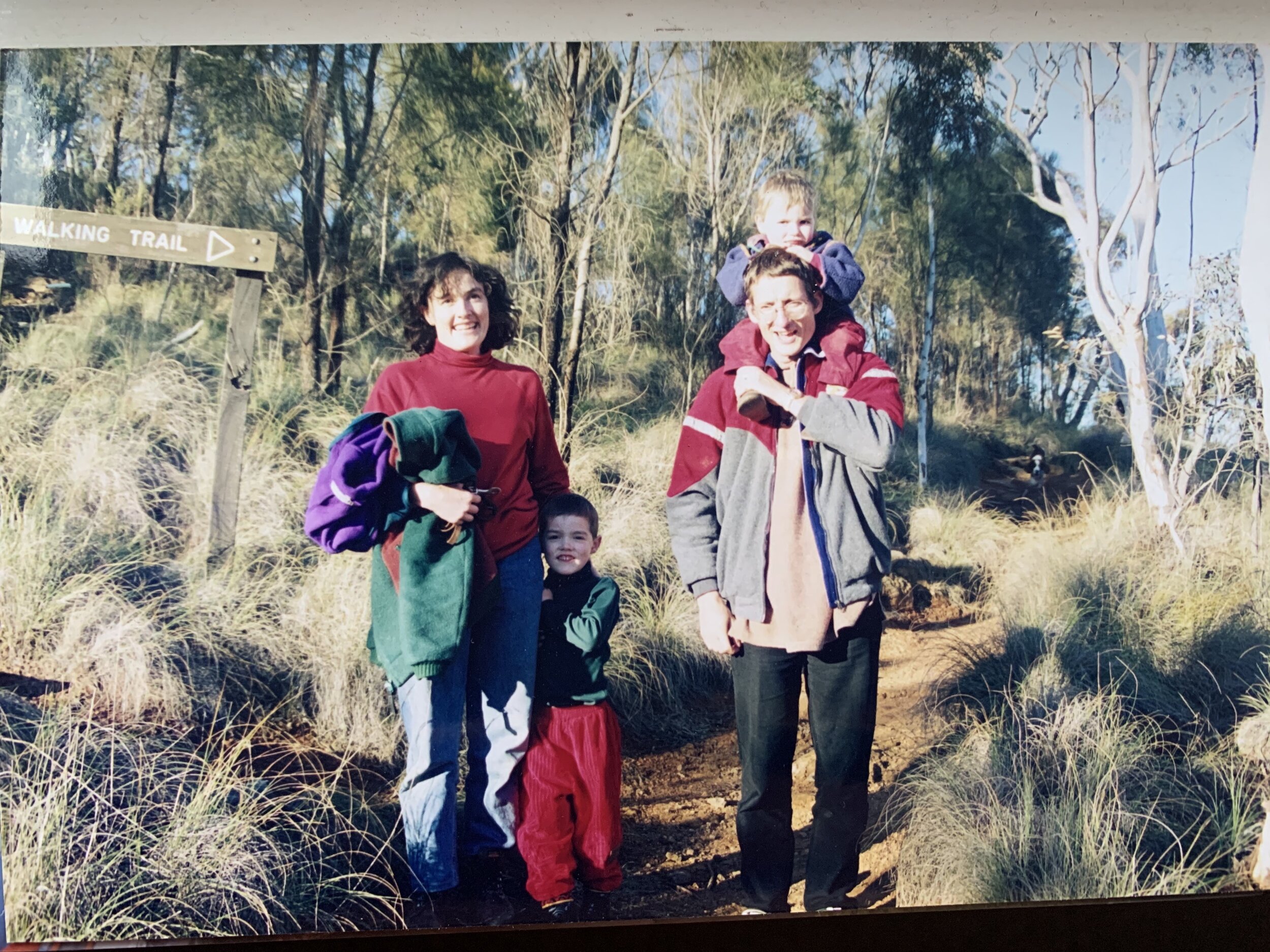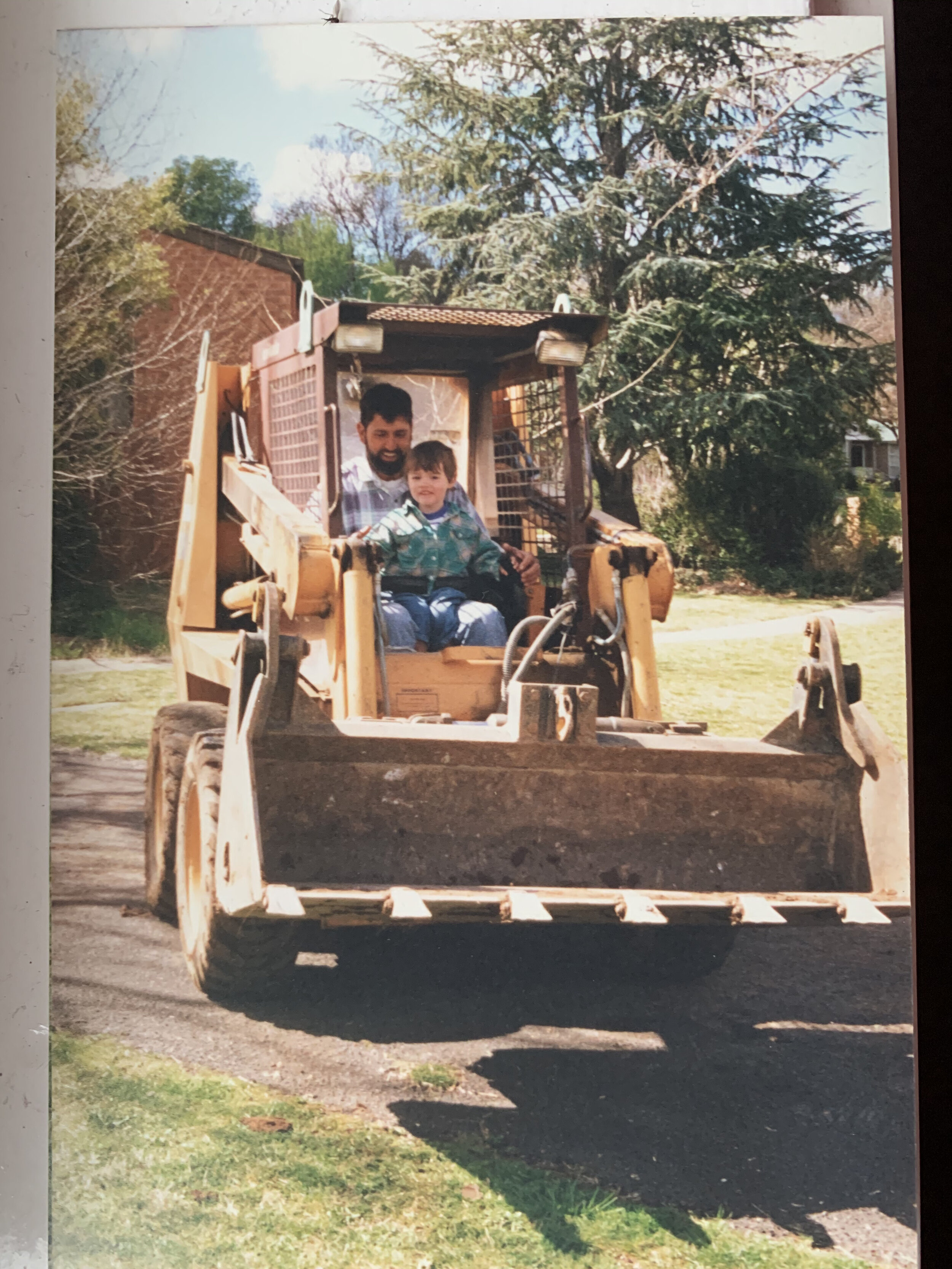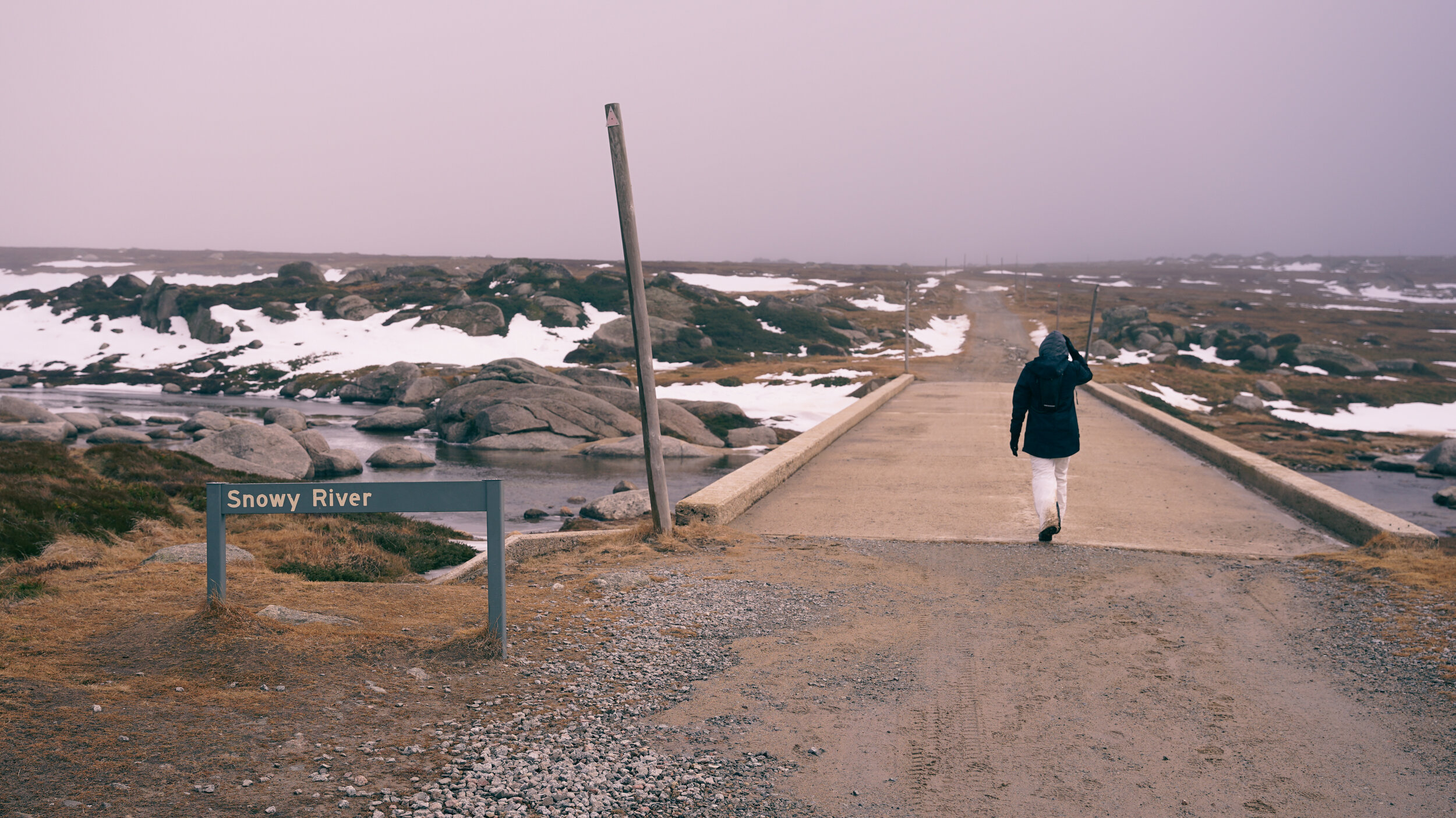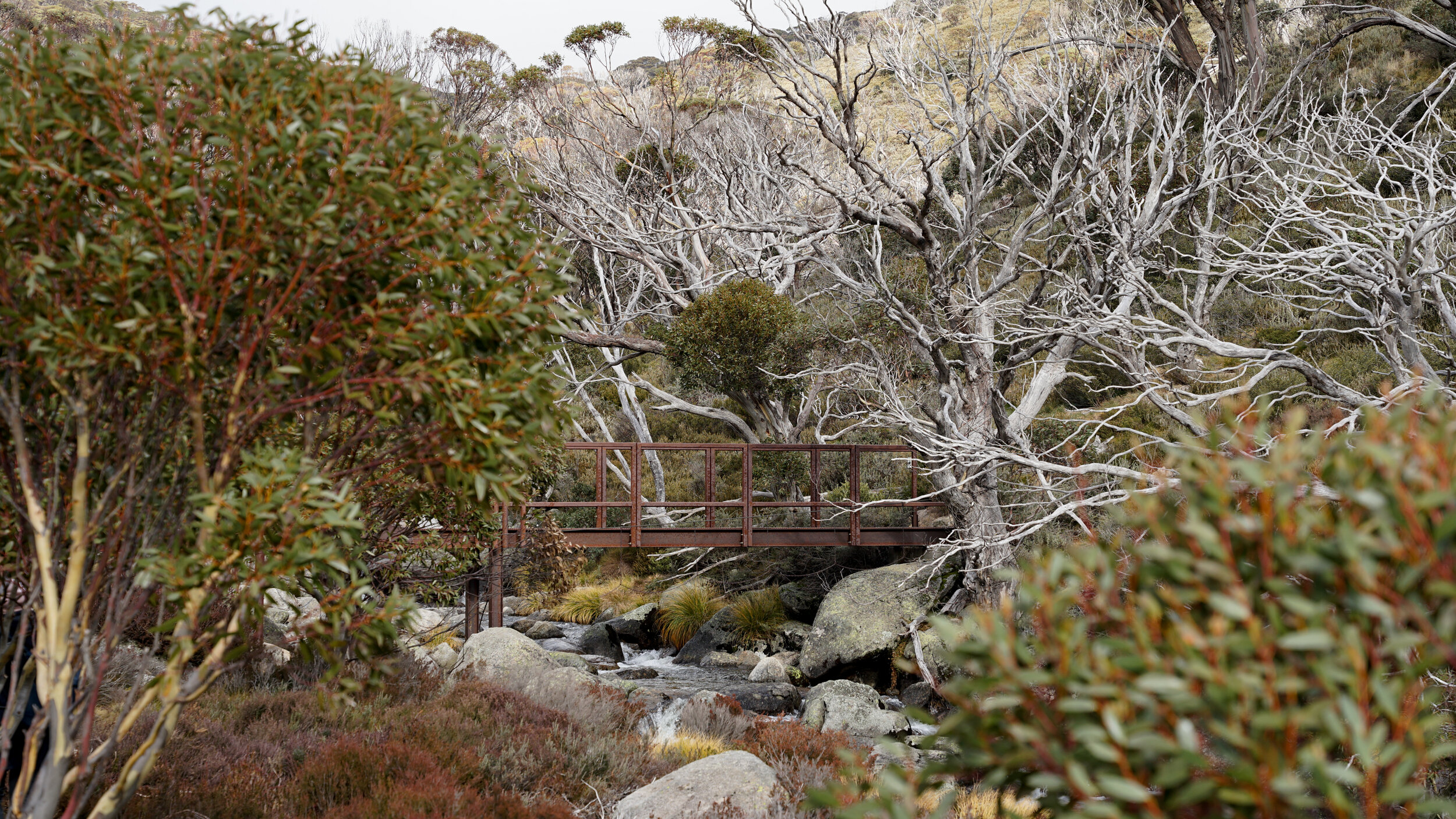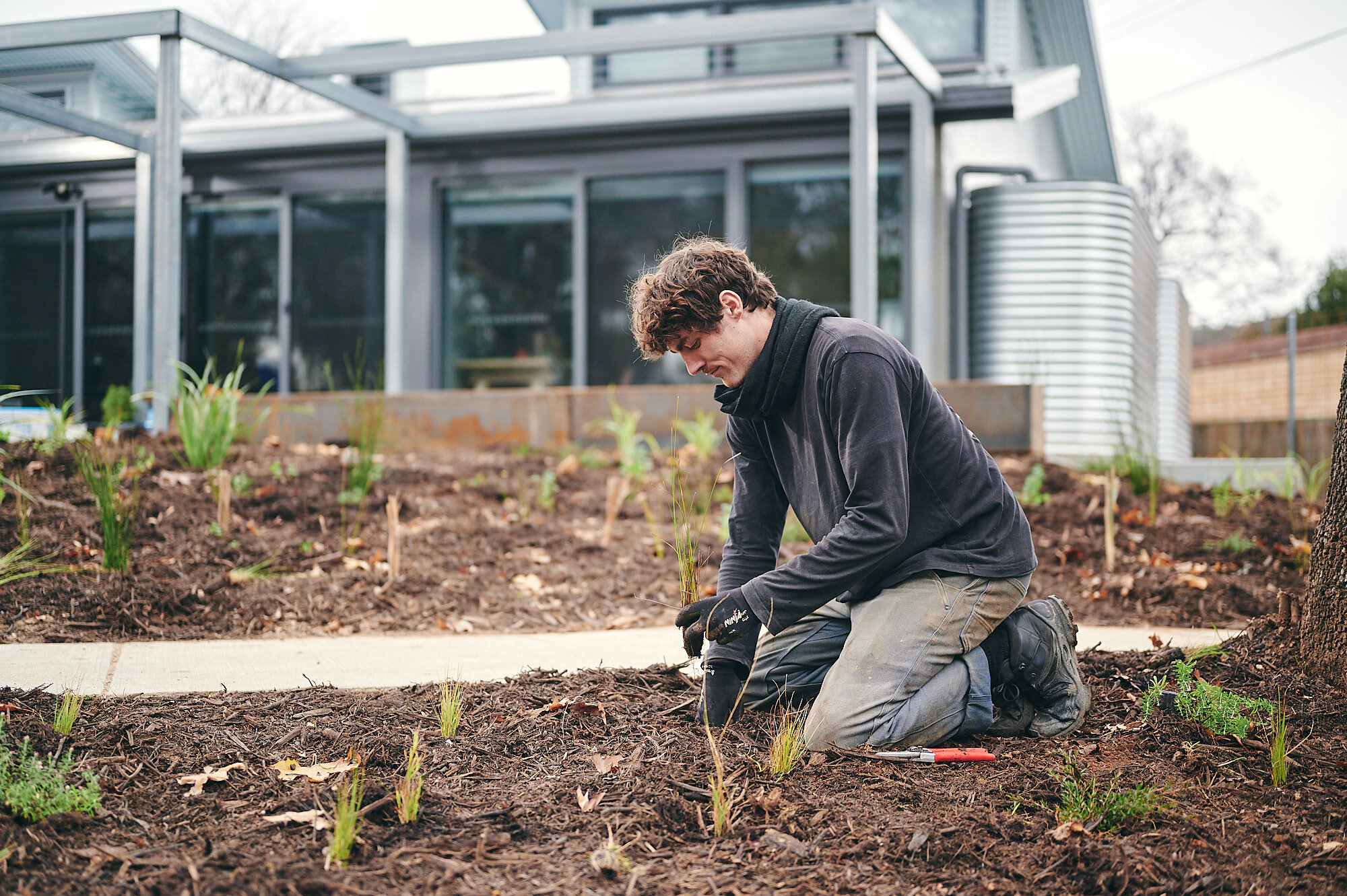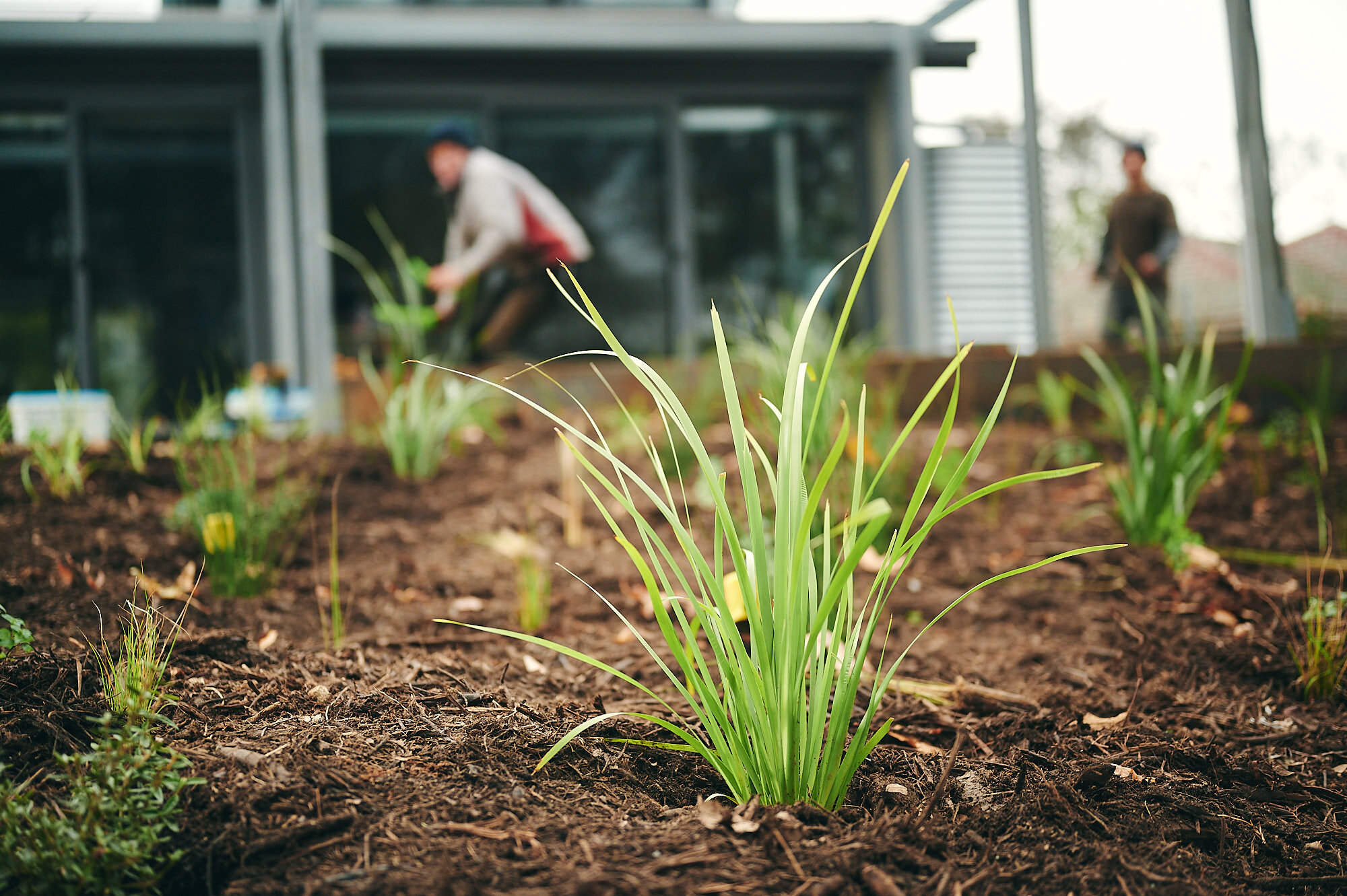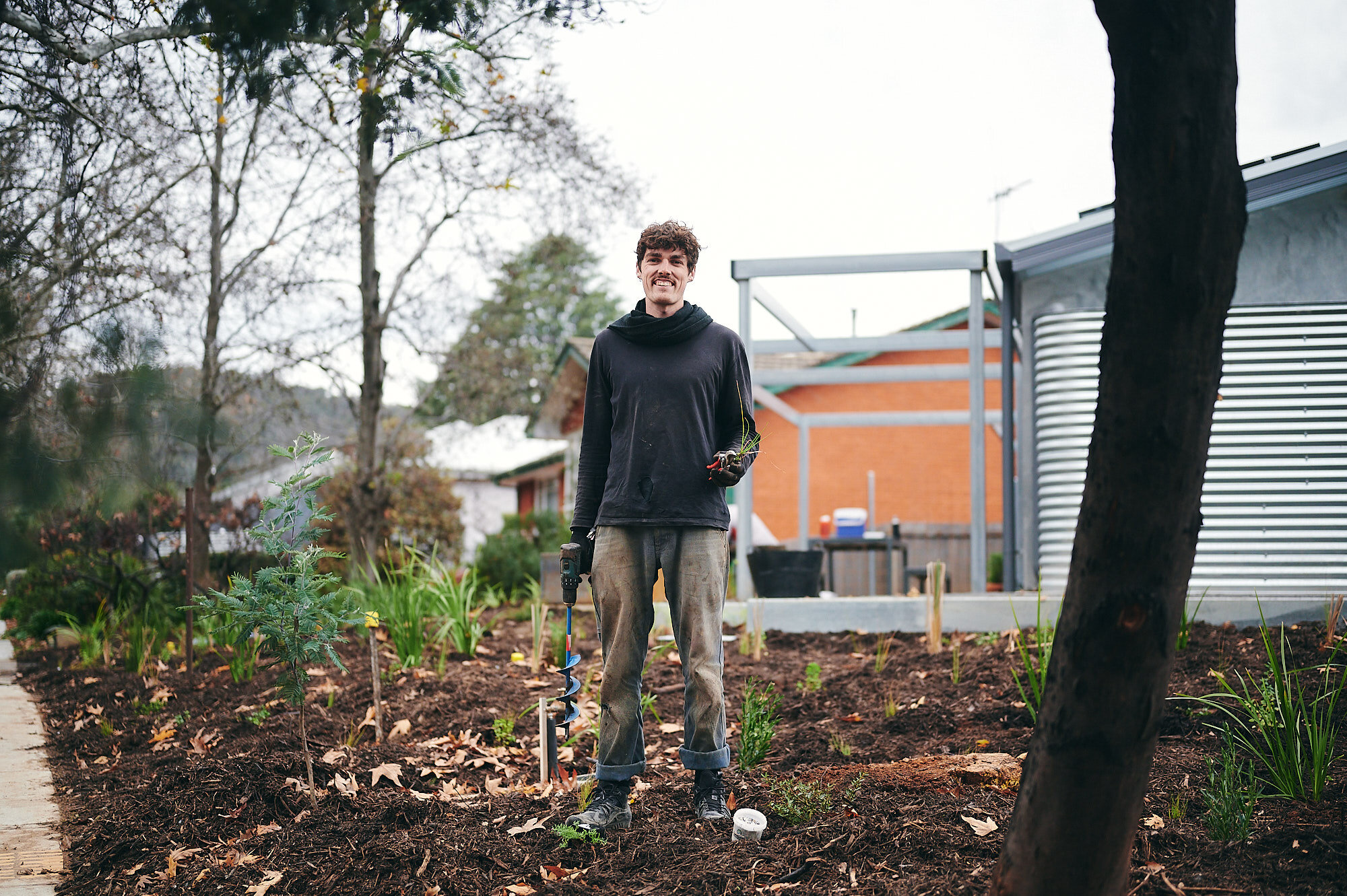NATIVE GARDENS WITH LACHLAN RICHARDSON
August 2021
Lachlan Richardson, director of Bluebell2509.
If you’ve ever visited us in Griffith, you may have noticed our front native garden. Designed by a passionate, local team at Bluebell 2509, the large front lawn was created in an ecologically sensitive way.
The large green expanse is predominantly Myoporum, while the fringes are filled with a rich collection of native grasses. The key focus of the design was to create a guided experience for customers arriving at Thor’s Hammer. As visitors park on site, they’re guided up a ramp onto the boardwalk, surrounded by an array of native grassland textures.
Originally very small, the Eucalyptus gregsoniana are growing quickly. Soon to enclose the boardwalk as a tunnel of mallee Eucalypts!
I spoke with Lachlan Richardson, the director of Bluebell 2509 about how he came to work as a landscape designer.
“For as long as I can remember I’ve had a strong connection with landscape. Dad was a Ranger when I was a baby and we lived in one of the ranger houses in Namadgi National Park.
Growing up we were always going on bush walks. I don’t know that I was always happy to be going out into the bush as a child, preferring video games… but obviously Dad’s love of the bush & Mum’s passion as a landscape architect sunk in as I’ve just spent the last 3 days hiking in the snow in Kosciuszko National Park!”
As a teenager, Lachlan worked for his grandfather and uncle, looking after people’s gardens before starting his own gardening business.
“I believe the art of gardening is an essential piece of my experience as a landscape designer. Gardening makes you attuned to the seasons, you learn what works and what doesn’t work and you learn to watch and admire natural processes as they work their magic; intervening as little as possible and only when required to help things develop in the desired way.”
Lachlan’s gardening business gradually evolved into Landscape Design & Construction, as he says he had a strong pull to create, and clients kept asking for design input.
“I learned my fundamental building skills under the mentoring of the late Paul Lynzaat (one of Thor’s teachers) who was incredibly generous with his time in teaching me.
In addition to Paul and my Parents, I’ve had 3 excellent mentors who I wouldn’t be the person I am today without. They are Camilo Potocnjak-Oxman, Myles Chandler & Thor Diesendorf.
I’m in love with the process of learning more and more about how to care for our landscape and how landscapes need to be integrated with architecture to support long thriving relationships between humans and our non-human neighbours.
I look forward to working in this space for the rest of my life.”
I’m always curious to know the reason behind a business name as it’s frequently quite personal, quirky and often, enormously interesting. A business name can give insight to the founder’s thinking and background, and often will become a selling point of the business, without that intention.
“I'm always consuming science fiction content. Usually Anime and Manga that are set in a Dystopian Future. Right now I'm reading a graphic novel called ‘Clover’, but I pretty much always return to the author Tsutomu Nihei (Blame!, Knights of Sidonia) for inspiration.
I love this genre of Dystopian Sci-Fi because its topic of discussion is how the world 'could' be, both positively and negatively. This setting is always filled with interesting built environment concepts & alternate technological and social realities. It’s also a platform used to speculate on the dangers of the path our society is on now.
As a Landscape designer my job is to solve landscape problems and create better outcomes in spaces. Reading non-fiction really helps me to break my thinking out of how things are usually done, which helps me to use my imagination while thinking up design solutions.
I think this content resonates with me both stylistically and emotionally; I am deeply worried about our planet's current ecological circumstances and hope that in some way I can contribute to taking it in a slightly better direction.
And so Lachlan tells us a bit more background on the very unique, albeit pertinent concept of Bluebell 2509;
“We’re a small landscape design & build team with a bit of an odd conceptual backstory... bare with me!
Bluebell 2509, is short for:
Project: Bluebell
Unit: 2509.
Project Bluebell was established in a dark future (4049AD) where earth's ecological systems are on the brink of total collapse.
Lockwood heavy industries (a heavy machinery & arms corporation) had new tech which would allow the transmission of human consciousness into the past. This corporation did something unheard of; where they took liability for their contributions to the end of humanity and founded project bluebell where they used this new technology to distribute human consciousness throughout history in 'units' as seeds for an alternative timeline than their own. Our unit, unit 2509, was transmitted to the year 2019 with the purpose of nudging humanity's timeline into a future that doesn’t hold total ecological system collapse. Being a team from the future we're not heavily resourced. We partner with people from this time, trying to deliver unique and ecological gardens with the hope of influencing others to do the same.”
Designing and building unique gardens with a focus on water saving and wildlife habitat is at the core of everything that Bluebell 2509 does. At the time of writing his answers, Lachlan and his team are installing a garden designed in 2019 for a home in Hackett.
“We had the challenging brief of creating something lush using endemic species to create habitat for birds. As you probably know, Canberra bush is pretty far from lush so the only way we could create lush habitat for local fauna would be by using wetland species.
Thankfully, because we were engaged early enough in the knockdown rebuild process, we were able to have all of the grey water from the home diverted for use in the garden.
We're installing a micro-wetland in the front garden; populating it with reeds and other endemic wetland species to filter and clean the grey water. It will also provide homes for lizards, frogs, insects and birds.
We've used a minimal hard-surface approach, installing all foot and vehicle traffic areas with permeable materials. This way we can manage run-off and recharge the site’s ground water every time it rains.
Instead of the driveway being wasted space, we've turned it into an additional garden bed that the clients can drive their car over (think of tyre tracks in a meadow). We’re managing erosion here with a soil stabilisation mesh.
In the site clearing stage of this project we recycled 45 tons of topsoil; filtering construction waste & couch grass roots (an invasive grass weed) out of the topsoil, while retaining the complex network of living organisms present in the soil.
A key feature we've noted that healthy functioning ecosystems contain is a huge range of small - often overlooked - ground cover species. These ecosystems usually cover every inch of soil with foliage. On this site we're aiming to plant as densely as we can (in areas planting as densely as 9 plants per square meter), introducing a wide variety of native understory groundcover plants to help build biodiversity.
Over the next 2 years as we garden this site, we'll split successful plants to speed up the establishment of the garden towards full plant coverage. During this period we will undoubtedly have to weed to keep the balance of plants in check, but beyond that time the garden should mostly hold its own healthy balance of weeds and intentionally planted things, with minimal weeding required.
We advocate for the value of weeds.
They are a natural part of ecology as they provide the valuable service of protecting and restoring disturbed soils - so long term this garden will allow weeds to be a component contributing to the biodiversity in this garden. This job will be finished by the beginning of July, and with the soil preparation and water available should grow very quickly, hopefully looking great as soon as the end of this summer.
We can't wait for our next opportunity to care for the landscape while doing beautifully detailed finishes on a garden.
Story edited by Irina Agaronyan
Photo credits: Rohan Thomson


